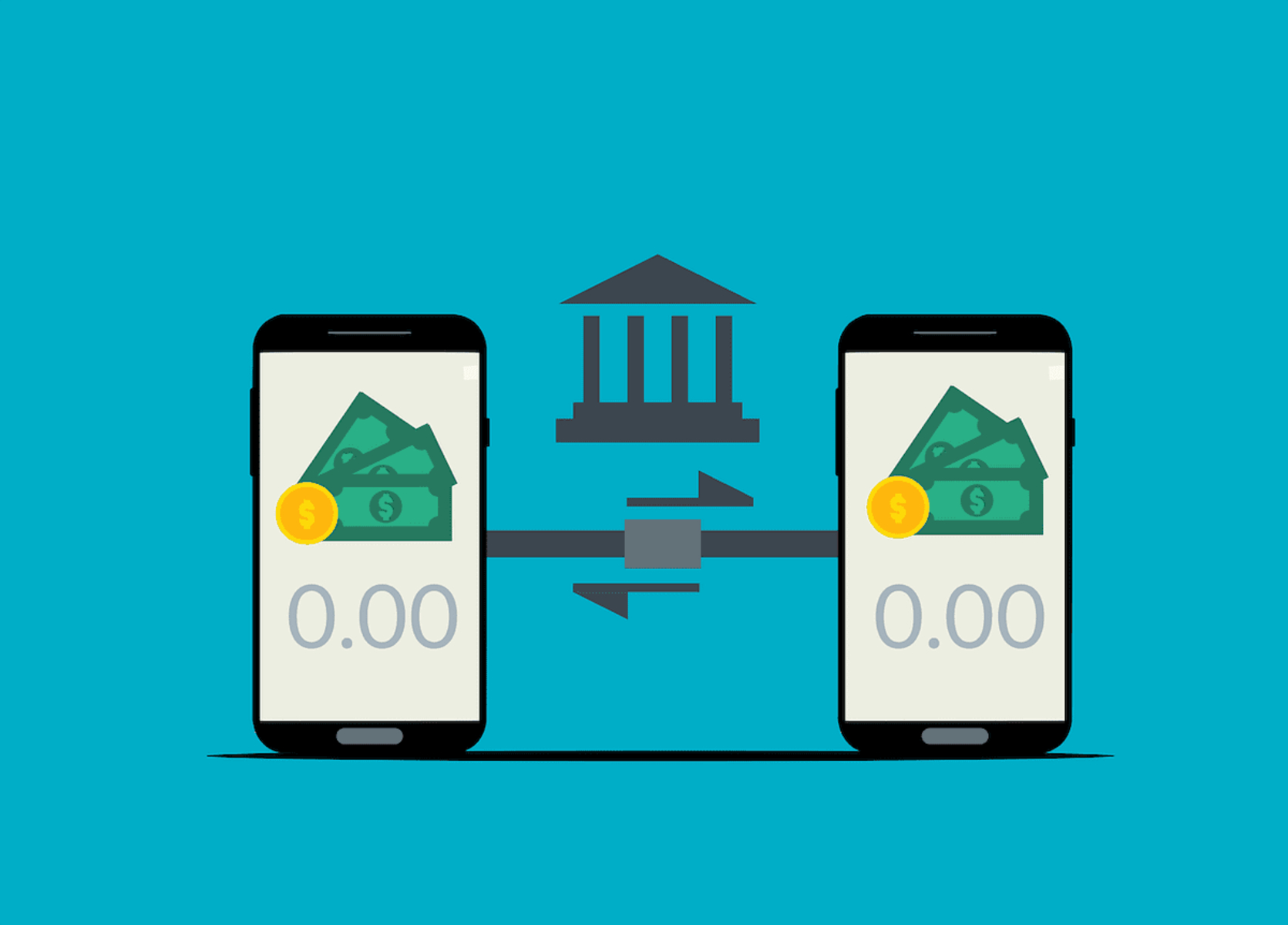Introduction
Welcome to the world of banking, where each day plays a vital role in ensuring the smooth functioning of financial institutions. In this article, we’ll delve into the concept of a banking day, exploring its definition, importance, and the various activities that take place. Whether you’re a customer, an aspiring banker, or simply curious about the inner workings of the financial world, understanding the concept of a banking day is crucial.
A banking day refers to a working day during which banks and other financial institutions are open for business. It is a designated period when customers can engage in various banking transactions, access services, and seek assistance from professionals. The structure and operations of a banking day may differ between countries, but the underlying concept remains the same – to facilitate financial activities and provide efficient services to customers.
The importance of banking days cannot be underestimated. They serve as the backbone of the financial system, ensuring the smooth flow of money and enabling individuals and businesses to manage their finances effectively. Without designated banking days, the ability to deposit, withdraw, transfer funds, and avail other financial services would be severely impaired.
On a typical banking day, financial institutions follow a specific schedule to accommodate the needs of customers. This schedule often aligns with the working hours of the respective country or region, ensuring accessibility and convenience. Banks usually open in the morning and close in the evening, allowing customers ample time to conduct their banking activities.
Definition of a Banking Day
A banking day is a designated period of time during which banks and other financial institutions are operational and open for business. It is a crucial concept in the world of finance, as it defines the time frame in which customers can engage in various financial activities and avail themselves of banking services. The specific duration and structure of a banking day may vary between countries and financial institutions, but the overall purpose remains the same – to facilitate financial transactions and provide assistance to customers.
During a banking day, individuals and businesses can conduct a wide range of transactions, including depositing and withdrawing money, transferring funds between accounts, initiating loan applications, seeking financial advice, and managing their accounts. Banks also utilize banking days to process and settle transactions, ensuring the proper flow of funds and maintaining the stability of the financial system.
Typically, banking days align with the working hours of a particular country or region. In most cases, banks open in the morning and close in the evening, allowing customers sufficient time to visit branches, interact with bank staff, and complete their desired financial tasks. However, it’s worth noting that the rise of digital banking has expanded the accessibility of banking services beyond traditional working hours, enabling customers to perform certain transactions online or through mobile applications at any time.
Financial institutions often follow regulatory guidelines and industry standards to determine the number of banking days in a week. For instance, in many countries, banks operate from Monday to Friday, with Saturday and Sunday designated as non-working or “non-banking” days. This schedule allows banks to provide continuity in services while also allowing employees to have their designated days off.
Overall, the definition of a banking day revolves around the notion of providing a specific period of time in which banks and financial institutions are available to cater to the financial needs and requirements of their customers. It plays a crucial role in the functioning of the financial system, ensuring the smooth flow of money, assisting customers with their financial decisions, and contributing to the overall economic stability of a country or region.
Importance of Banking Days
Banking days are of paramount importance in the realm of finance and play a crucial role in the daily lives of individuals, businesses, and the overall functioning of the economy. Let’s explore why banking days are significant and the impact they have:
1. Facilitating Financial Transactions: Banking days provide individuals and businesses with the opportunity to conduct a wide array of financial transactions. Whether it’s depositing money, withdrawing cash, transferring funds, or making payments, banking days ensure that these activities can be undertaken smoothly and efficiently. Without designated banking days, the ability to manage finances, carry out transactions, and access banking services would be severely disrupted.
2. Offering Accessibility and Convenience: Banks and financial institutions align their operations with the working hours of the respective country or region. This ensures that customers have ample time to visit branches, interact with bank employees, and seek assistance. The availability of banking services during specific hours offers convenience to customers, enabling them to address their financial needs without interruption.
3. Providing Financial Advice and Assistance: Banking days are not only about transactions but also about seeking guidance and support. Customers can visit banks during these days to discuss their financial goals, inquire about investment opportunities, or seek advice on managing their finances effectively. The expertise provided by bank professionals helps individuals make informed decisions and navigate complex financial landscapes.
4. Maintaining Economic Stability: The smooth functioning of banking days contributes to the overall economic stability of a country or region. Banks play a vital role in facilitating transactions, lending money to businesses and individuals, and providing financial services that drive economic growth. By establishing designated banking days, economies can ensure the efficient allocation of capital and maintain the stability of the financial system.
5. Serving as Regulatory Checkpoints: Banking days also serve as regulatory checkpoints for financial institutions. During these days, banks process and settle transactions, conduct necessary compliance checks, and ensure adherence to regulations and policies. This fosters transparency, accountability, and trust within the banking sector, safeguarding customers’ interests and maintaining the integrity of the financial system.
6. Supporting Business Operations: Banking days are crucial for businesses. They allow companies to manage their cash flows, process payments, and access credit facilities. By being able to initiate transactions and communicate with their banking partners, businesses can ensure smooth operations and maintain financial stability.
In summary, the importance of banking days cannot be overstated. They provide individuals and businesses with crucial access to financial services, facilitate smooth transactions, offer expert advice, contribute to economic stability, and support the overall functioning of the financial system. The designated working days enable customers to manage their finances effectively and ensure that banking institutions fulfill their role as key players in the economic landscape.
Typical Banking Day Schedule
A typical banking day operates on a well-defined schedule that allows customers to access financial services and engage in various transactions. While the specifics may vary between countries and financial institutions, let’s explore a general outline of a typical banking day schedule:
Morning: Banks generally open their doors to customers in the morning, typically around 9:00 AM or 10:00 AM. This allows individuals to begin their day by taking care of their banking needs. The exact opening time may differ from bank to bank, so it’s advisable to check with your local branch for their specific hours.
Customer Assistance: Upon entering the bank, customers are greeted by bank representatives who are ready to assist them with their banking inquiries and needs. This can include guidance on account management, information about financial products and services, or assistance in initiating transactions. Bank personnel are trained to provide friendly and knowledgeable customer service to ensure a positive experience for each individual.
Transaction Processing: Banking days are instrumental in processing various financial transactions. Customers can deposit cash or checks into their accounts, withdraw funds, or transfer money between accounts. These transactions are typically carried out over the counter with the assistance of bank tellers or through self-service options such as Automated Teller Machines (ATMs).
Loan and Mortgage Applications: Customers interested in applying for loans or mortgages often use banking days to discuss their options with bank representatives and initiate the application process. This involves providing necessary documents, completing application forms, and undergoing creditworthiness assessments. Bank employees guide customers through the process, ensuring a thorough understanding of the terms and conditions associated with the loan or mortgage.
Financial Advice: Banks are also a source of financial advice and guidance for customers. During banking days, individuals can schedule appointments with financial advisors to discuss investment opportunities, retirement planning, or general financial management. These consultations are designed to help customers make informed decisions and optimize their financial well-being.
Afternoon: As the day progresses, banking hours often continue into the afternoon, allowing more individuals to access banking services during their lunch breaks or after work. This extended availability accommodates customers with varying schedules, ensuring that everyone has ample opportunity to take care of their financial affairs.
Closing Time: Banks usually close their doors for customer interactions in the late afternoon or early evening, typically around 5:00 PM or 6:00 PM. However, it’s important to note that some branches may have extended hours on specific days or offer limited services during certain hours after closing.
Online and Mobile Banking: In addition to traditional banking hours, customers can also access their accounts and perform certain transactions through online or mobile banking platforms. These platforms offer round-the-clock availability, allowing customers to manage their finances, transfer money, pay bills, and view account statements at their convenience.
It’s essential to remember that the specific schedule of a banking day may vary depending on the country, region, and individual financial institution. It’s always advisable to check the operating hours of your local bank branch or utilize online platforms for up-to-date information.
In summary, a typical banking day follows a predetermined schedule that caters to the needs of customers. The morning hours mark the opening of the bank, with staff ready to assist customers with their inquiries. Transaction processing, loan applications, and financial advice are key activities during banking days. Banks often extend their hours into the afternoon to accommodate individuals with different schedules. Additionally, online and mobile banking platforms provide customers with flexibility and accessibility beyond traditional banking hours.
Transactions Handled on a Banking Day
A banking day is a prime opportunity for individuals and businesses to engage in various financial transactions and manage their funds effectively. Let’s explore some of the key transactions that are typically handled on a banking day:
1. Deposits: One of the most common transactions conducted on a banking day is depositing money into a bank account. Customers can deposit cash, checks, or money orders, which are then credited to their accounts. Banks provide deposit slips or electronic means for individuals to record the details of their deposits, ensuring accurate and transparent accounting.
2. Withdrawals: Individuals often utilize banking days to withdraw funds from their accounts. This can be done in person at the bank counter or through Automated Teller Machines (ATMs). Banks have limits on daily withdrawals to safeguard against potential risks and maintain security for both customers and the institution.
3. Fund Transfers: Banking days facilitate the transfer of funds between different accounts within the same bank or across different financial institutions. Customers may transfer money to pay bills, send funds to family or friends, or move funds between their own accounts for budgeting purposes. This transaction can be done in person, via online banking platforms, or through wire transfer services offered by the bank.
4. Loan Payments: Many individuals have loans with banks, such as personal loans, mortgages, or car loans. On a banking day, borrowers can make loan payments toward the principal amount and interest. These transactions ensure that borrowers stay on track with their repayment schedules, helping them maintain a good credit history and avoid defaulting on their loan obligations.
5. Account Balances and Statements: Banking days allow customers to check their account balances and obtain statements reflecting their recent transactions. This provides individuals with a snapshot of their financial position and helps them reconcile their records. Balances and statements can be accessed in person at a bank branch, through ATMs, or via online and mobile banking services.
6. Foreign Exchange: Many banks offer foreign exchange services, allowing customers to convert their currency into foreign currency or vice versa. These transactions can take place on a banking day, enabling customers to obtain the desired currency for travel, business purposes, or personal needs.
7. Account Opening and Closure: Banking days also provide individuals with the opportunity to open new accounts or close existing ones. Customers can visit the bank to complete the necessary documentation, provide identification, and discuss the various account options available. Similarly, individuals who wish to close their accounts can do so on a banking day, ensuring a smooth transition and the return of any remaining funds.
8. Cashier’s Checks and Money Orders: Banking days allow customers to obtain cashier’s checks or money orders, which are widely accepted as secure forms of payment. These instruments are often used for significant transactions such as purchasing a vehicle, making large payments, or facilitating secure money transfers.
9. Card Services: Banking days also involve handling card-related transactions. Customers can apply for debit or credit cards, report lost or stolen cards, and activate new cards. Cardholders may also conduct transactions such as balance inquiries, PIN changes, or dispute resolution on banking days.
In summary, a banking day presents opportunities for various financial transactions, including deposits, withdrawals, fund transfers, loan payments, account management, foreign exchange, and card services. These transactions enable individuals and businesses to manage their funds, access banking services, and fulfill their financial needs effectively. Overall, banking days play a crucial role in facilitating convenient and secure financial interactions for customers.
Services Provided on a Banking Day
A banking day offers a wide range of services beyond transactions, catering to customers’ diverse financial needs. Let’s explore some of the key services typically provided on a banking day:
1. Account Opening: Banking days provide individuals with the opportunity to open new accounts. Whether it’s a savings account, checking account, or specialized account, customers can visit the bank, complete the necessary documentation, and discuss the available options with bank representatives. Opening an account on a banking day allows for immediate access to banking services and facilitates the management of personal finances.
2. Account Management: Banks offer various services to help customers manage their accounts effectively. On a banking day, individuals can update their account information, such as contact details or beneficiary designation, ensuring that their records are accurate and up-to-date. Additionally, customers can inquire about account-related queries, such as interest rates, fees, or transaction limits, to make informed financial decisions.
3. Financial Advisory Services: Many banks have dedicated financial advisors available on banking days to provide personalized advice and guidance. These professionals offer insights on investment opportunities, retirement planning, risk management, and other financial matters. By scheduling appointments with financial advisors, individuals can receive expert guidance tailored to their unique financial goals and circumstances.
4. Loan Applications: Banking days are crucial for individuals and businesses seeking loans. Customers can discuss loan options, submit applications, and provide the required documentation to initiate the loan process. Bank representatives are available to guide applicants through the application procedure, assess creditworthiness, and provide information on interest rates, repayment terms, and eligibility criteria.
5. Safe Deposit Boxes: Many banks offer safe deposit box services on banking days. Customers can rent a secure box within the bank’s premises to store valuable documents, jewelry, or other valuable assets. Availability on banking days allows customers to access their safe deposit boxes, add or remove items, and ensure the safety of their belongings.
6. Foreign Currency Exchange: Banking days provide customers with foreign currency exchange services. Travelers can exchange their home currency for the foreign currency of their destination, allowing them to have the required funds for their trip. Banks also facilitate the exchange of foreign currency back to the local currency on banking days, enabling individuals to manage their travel expenses effectively.
7. Financial Education Programs: Banks often organize financial education programs and workshops to enhance financial literacy among customers. These educational sessions may cover topics such as budgeting, saving, debt management, or investment strategies. By attending these programs on banking days, individuals can acquire valuable knowledge and skills to make informed financial decisions.
8. Online and Mobile Banking Assistance: On banking days, banks provide customer support services for online and mobile banking platforms. Customers can seek assistance in setting up online banking accounts, navigating the features and functions of the platform, troubleshooting technical issues, or resolving any concerns related to digital banking services. This support ensures that customers can effectively utilize online and mobile banking options at their convenience.
9. Credit and Debit Card Services: Banking days also offer services related to credit and debit cards. Customers can apply for new cards, inquire about card rewards programs, report lost or stolen cards, and request replacements. Additionally, banking days are designated for resolving card-related issues, such as disputing transactions, updating card limits, or changing PINs.
In summary, a banking day encompasses a wide range of services beyond transactions. From account opening and management to financial advisory services, loan applications, safe deposit boxes, foreign currency exchange, financial education programs, online banking assistance, and credit and debit card services, banks strive to provide comprehensive support to meet customers’ financial needs. These services, available on banking days, ensure that individuals and businesses can access a wide range of banking solutions effectively and efficiently.
Key Players on a Banking Day
A banking day involves several key players who contribute to the smooth functioning of financial institutions and facilitate a positive customer experience. Let’s explore some of the essential individuals and roles that play an integral role on a banking day:
1. Bank Tellers: Bank tellers are often the first point of contact for customers on a banking day. They handle various transactions, such as deposits, withdrawals, and fund transfers. Tellers provide personalized service, ensuring accuracy and efficiency in processing transactions. They also assist customers with their inquiries, address concerns, and provide information about available banking products and services.
2. Relationship Managers: Relationship managers or personal bankers play a vital role in building long-term relationships with customers. They assist customers with complex inquiries, provide personalized financial advice, and guide them in making informed decisions based on their unique needs and goals. Relationship managers also offer specialized banking services, such as wealth management or private banking, catering to high-net-worth individuals and businesses.
3. Customer Service Representatives: Customer service representatives are responsible for ensuring a positive and seamless experience for customers. They handle inquiries, provide general information, address complaints, and assist with account-related issues. Customer service representatives strive to resolve customer concerns promptly and professionally, fostering customer satisfaction and loyalty on a banking day.
4. Loan Officers: Loan officers assist individuals and businesses with loan applications and approval processes. They guide customers through the necessary documentation, assess creditworthiness, and provide information on available loan options, interest rates, and repayment terms. Loan officers play a critical role in evaluating borrowers and ensuring responsible lending practices.
5. Financial Advisors: Financial advisors provide expert guidance and advice on a banking day. They help customers with investment strategies, retirement planning, risk management, and other financial matters. Financial advisors analyze customers’ financial situations, assess their goals, and provide customized recommendations to optimize their financial well-being.
6. Branch Managers: Branch managers oversee the operations of a bank branch on a banking day. They are responsible for managing staff, ensuring compliance with regulations, overseeing customer service, and addressing operational challenges. Branch managers act as leaders, maintaining the smooth functioning of the branch and driving overall performance and success.
7. Support Staff: Behind the scenes, a team of support staff works to support banking day operations. This includes individuals responsible for administrative tasks, IT support, security, accounting, and compliance. Their roles are critical in maintaining the infrastructure and systems necessary for a seamless banking day experience, both for customers and the financial institution.
8. Security Personnel: Banks maintain a strong focus on security on a banking day. Security personnel are present to ensure customer safety, monitor security systems, and prevent fraud or theft. They play a crucial role in maintaining the trust and confidence of customers by implementing robust security measures.
9. Online and Mobile Banking Support: On a banking day, dedicated teams support online and mobile banking platforms. They monitor the systems, address technical issues, and assist customers with online banking inquiries. These professionals play an essential role in ensuring the smooth functioning of digital banking channels, which have become increasingly popular and convenient for customers.
In summary, a banking day involves various key players who collectively contribute to the efficient and effective functioning of a bank. Bank tellers, relationship managers, customer service representatives, loan officers, financial advisors, branch managers, support staff, security personnel, and online and mobile banking support all play crucial roles in providing essential services, addressing customer needs, and maintaining the overall operations of the financial institution on a banking day.
Factors Affecting Banking Day Operations
A banking day’s operations can be influenced by various factors that impact the efficiency and effectiveness of financial institutions. Let’s explore some of the key factors that can affect banking day operations:
1. Regulatory Requirements: Financial institutions must comply with a multitude of regulatory requirements imposed by governing bodies. These regulations include anti-money laundering measures, customer identification processes, data protection laws, and reporting obligations. Meeting these requirements can affect the speed and flow of banking operations, as additional checks and documentation may be necessary on a banking day.
2. Technological Infrastructure: The technological infrastructure of a bank plays a crucial role in its daily operations. Banks heavily rely on robust systems for transaction processing, account management, customer interactions, and security measures. Technological disruptions, network outages, or system upgrades can impact banking day operations, causing delays or interruptions in service delivery.
3. Staffing and Training: Adequate staffing levels and well-trained employees are essential for smooth banking day operations. Banks need to ensure they have sufficient staff to handle customer transactions, address inquiries, and provide support services. Insufficient staffing or lacking expertise can lead to prolonged wait times and a decline in customer service quality on a banking day.
4. Economic Conditions: Economic conditions, such as interest rates, inflation, and changes in consumer behavior, can influence banking day operations. For instance, during periods of economic instability, banks may experience increased loan default rates, higher demand for financial assistance, or a surge in customer inquiries. Banks must adapt their operations to these changing economic conditions to maintain stability and meet customer needs effectively.
5. Security and Fraud: Banks prioritize security to protect the financial assets of customers and the institution itself. Ongoing efforts to combat fraud, cyberattacks, and identity theft can impact banking day operations. Banks employ strict security protocols, such as transaction verification, identity verification, and cybersecurity measures. These necessary precautions can lead to additional steps and potential delays during banking day transactions.
6. Customer Behavior and Demand: Customer behavior and demand can fluctuate, affecting banking day operations. On certain days, banks may experience higher footfall, longer queues, and increased transaction volumes. Banks must anticipate and manage customer expectations, adapting their operations to handle peak periods efficiently. Understanding customer behavior and demands is crucial for providing a seamless banking experience on a banking day.
7. External Factors: External factors, such as natural disasters, power outages, social unrest, or political events, can disrupt banking day operations. Such events can impact bank branches, online banking platforms, or the availability of services. Banks must have contingency plans and disaster recovery protocols in place to mitigate the impact of these external factors on banking day operations.
8. Market Competition: Banks operate in a competitive landscape, with customers having a wide range of options available to them. To remain competitive on a banking day, banks may introduce innovative products, enhance customer service experiences, or adjust pricing strategies. Responding to market competition requires banks to continuously review and optimize banking day operations.
9. Customer Expectations: Evolving customer expectations influence banking day operations. Customers now demand more convenient and accessible banking services, prompting banks to introduce digital and mobile banking solutions. To meet customer expectations, banks need to invest in technology, offer user-friendly interfaces, and adapt their processes to align with changing customer preferences.
In summary, banking day operations can be affected by various factors, including regulatory requirements, technological infrastructure, staffing and training, economic conditions, security and fraud considerations, customer behavior and demand, external events, market competition, and evolving customer expectations. Financial institutions must navigate these factors to ensure efficient, secure, and customer-centric operations on a banking day.
Conclusion
The concept of a banking day holds significant importance in the world of finance, acting as the foundation for the efficient functioning of financial institutions and the facilitation of various financial transactions. Through this article, we have explored the definition of a banking day, its significance, and the key activities and services that take place during these designated periods.
A banking day refers to a working day when banks and other financial institutions are open for business. It plays a vital role in facilitating financial transactions, providing accessibility to financial services, and supporting the overall functioning of the economy. Customers can engage in a wide range of activities on a banking day, including deposits, withdrawals, fund transfers, loan applications, account management, and financial advice sessions.
Several key players, including bank tellers, relationship managers, customer service representatives, loan officers, financial advisors, branch managers, and support staff, collaborate to provide efficient and customer-centric services on a banking day. Factors such as regulatory requirements, technological infrastructure, staffing, economic conditions, security considerations, customer behavior, and market competition can impact the smooth operations of a banking day.
In summary, a banking day acts as a crucial link between financial institutions and customers, serving as a time for individuals and businesses to access essential financial services, conduct transactions, and seek assistance. By understanding the definition and significance of a banking day, customers can effectively manage their finances, make informed decisions, and leverage the services provided by banks to meet their financial goals and needs.

























